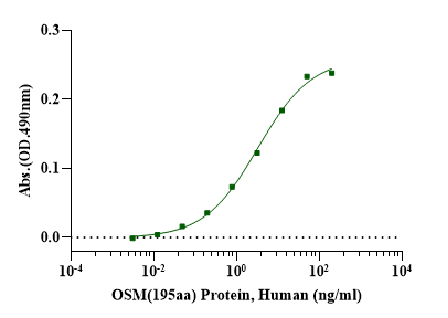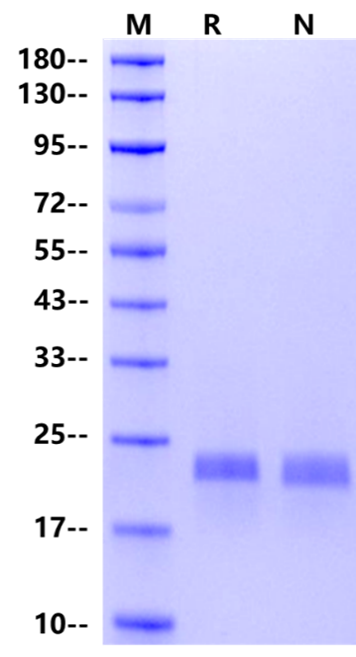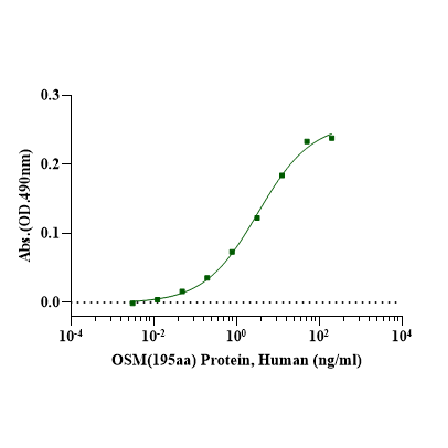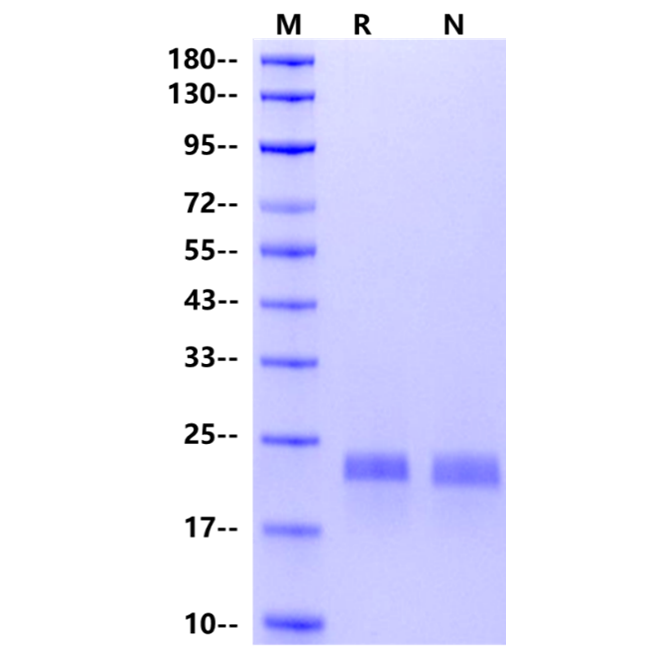Measured by a cell proliferation assay using TF-1 cells, The EC50 for this effect is less than 5ng/ml.
Product Details
Product Details
Product Specification
| Species | Human |
| Synonyms | OSM, Oncostatin M, MGC20461, OncoM |
| Accession | P13725 |
| Amino Acid Sequence | Ala26-Arg221 |
| Expression System | E.coli |
| Molecular Weight | 22kDa |
| Purity | >95% by SDS-PAGE |
| Endotoxin | <1EU/μg |
| Conjugation | Unconjugated |
| Tag | No Tag |
| Physical Appearance | Lyophilized Powder |
| Storage Buffer | 20mM Tris, 150mM NaCl, pH8.0, 1mM TCEP |
| Reconstitution | Reconstitute at 0.1-1 mg/ml according to the size in ultrapure water after rapid centrifugation. |
| Stability & Storage |
· 12 months from date of receipt, lyophilized powder stored at -20 to -80℃. · 3 months, -20 to -80℃ under sterile conditions after reconstitution. · 1 week, 2 to 8℃ under sterile conditions after reconstitution. · Please avoid repeated freeze-thaw cycles. |
| Reference |
1、Tanaka M. et al. (2003) Oncostatin M, a multifunctional cytokine. Rev Physiol Biochem Pharmacol. Reviews of Physiology, Biochemistry and Pharmacology. 149: 39-52. 2、Auguste P, et al. (1997) Signaling of type II oncostatin M receptor. J Biol Chem. 272(25): 15760-15764. |
Background
Oncostatin M (OSM) was initially identified as a polypeptide cytokine which inhibited the in vitro growth of cells from melanoma and other solid tumors. OSM shows significant similarities in primary amino acid sequence and predicted secondary structure to leukemia inhibitory factor (LIF), ciliary neurotrophic factor (CNTF), granulocyte colony-stimulating factor (G-CSF), interleukin 6 (IL-6), and interleukin 11 (IL-11). The antiproliferative activity of oncostatin M for some cell lines is synergised by TGF-beta and IFN-gamma. It promotes the growth of human fibroblasts, vascular smooth muscle cells, and some normal cell lines. Other OSM-mediated activities reported to date include: stimulation of plasminogen activator activity in cultured bovine aortic endothelial cells; regulation of IL-6 expression in human endothelial cells; and stimulation of LDL uptake and up-regulation of cell surface LDL receptors in HepG2 cells.
Picture
Picture
Bioactivity

SDS-PAGE





